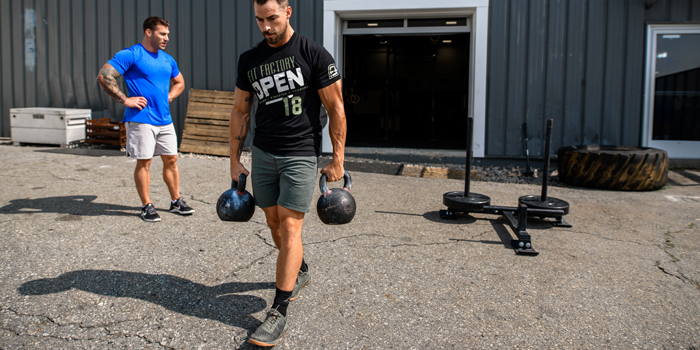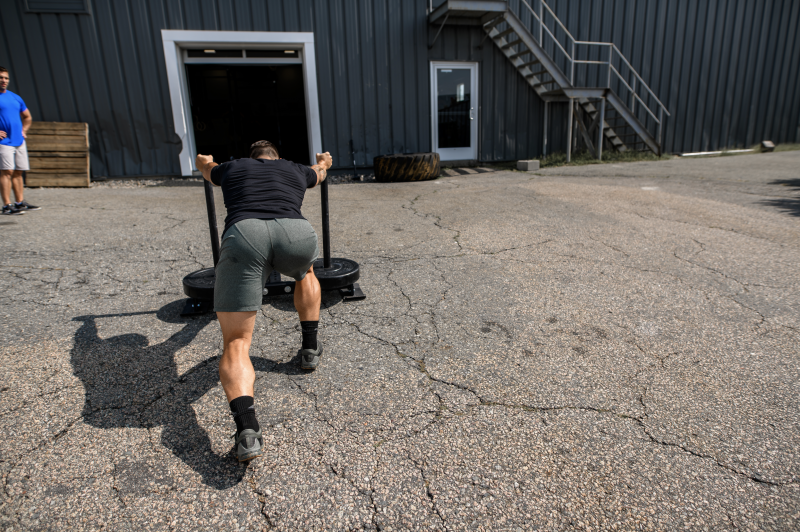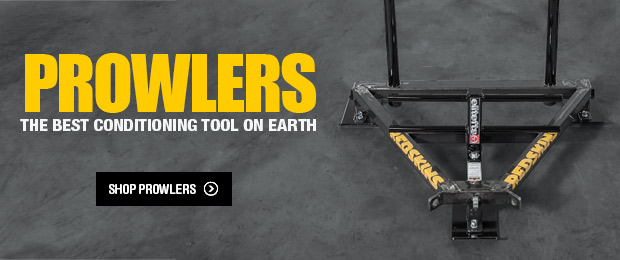
The term GPP (general physical preparedness) gets thrown around in boxes quite a bit — many coaches claim that the goal of their program is to develop GPP, and yet many of these same coaches don't use measures that actually develop it. And throwing heavy deadlifts into a WOD for your clients who are already lacking in the strength department won't develop GPP, either, and will likely get your clients hurt.
In layman's terms, we are talking about building your clients' foundations. This is something that should take precedence in group programming (GP). If your client cannot pull a sled or carry two heavy kettlebells without having to rest excessively between sets, then higher-skill work when fatigued isn't going to serve them well.
The Russians had a general plan for all of their athletes that was called the Rule of Three. This occurred in the early stages of training BEFORE specialization took place for THREE YEARS! Why is this relevant to you and your GP clients? If the Russians were smart enough to build their athletes' foundations first, then maybe this is something you should consider.
In a group setting, there are many challenges, though, like new clients entering on the regular. This means building GPP must be a consistent process done frequently and not just once in a while. More importantly, if we actually consider the goals of those who attend a group box class, it involves modest goals such as: look better, feel better, get stronger, have fun — all of which can be addressed with GPP measures.

This article is meant to inform you about the methods we use, a few of which we've borrowed from Louie Simmons. Here's what you need to know:
- Sled Work: This probably does not come as a shock to many of you, but actually the most important aspect of using the sled in GP involves its low-skill nature. Just about anyone who walks through your doors can perform this work. Obviously, for safety reasons this is important, but psychologically, it's incredibly important to subject newer clients to measures that won't leave them feeling defeated and sore for days on end. Moreover, the sled can be used for strength, conditioning, and recovery measures. How many other tools can make that claim!? In particular, we use the sled for strength work, powerwalking for shorter sets of 60 yards, and aerobic work for longer sets of up to a mile. The sled can train oxidative fibers as well as higher-threshold fibers. Because there is zero axial loading, this work is easy to recover from and can bridge the gap between higher-intensity sessions.
- Band Work: Like sled work, there is little skill needed to perform a pull-apart or a pushdown. Band work can improve the quality of soft tissue, strengthen lagging muscle groups, and when tension is higher, build lean muscle mass. Additionally, we can use band work for both warm-ups and finisher work and accumulate high-volumes of work fast! Most of your clients want to perform pull-ups. The first place to start is increasing the upper-back volume, and band variations are a great way to do that without risking injury.
- Hypertrophy Work: This can be done with both dumbbells, kettlebells, and barbells. The goal is to improve lagging muscle groups and build lean muscle, which correlates with improved motor firing and the muscle's ability to generate force. This is a staple in our group program design and is prescribed almost daily. For more on this, check out this article.
- Aerobic Work: This is another staple that must be done at least twice a week in group programming to help improve the cardiovascular network, which helps improve a number of important aspects of your clients' health and wellness. Good news: if you're performing longer sled pulls (30 minutes or more), then you're already training the aerobic system and cardiac output. A high percentage of your clients have shitty resting heart rates, which has a host of other ill effects. Regularly scheduled aerobic work is the easiest work to include and perform; the challenge is that many of your folks will not believe in its efficacy because it's easy to perform. In this case, it's best to use actual studies, such as this Scandavanian study, to prove that you're not just BS-ing them.
- Recovery Measures: While two of the measures we use to drive rest and recovery via the parasympathetic nervous system aren't necessarily GPP measures, they lend themselves to the bigger part of being able to stay away from overtraining by telling the body to start recovering before your folks like the gym. The two measures we've used with great success are parasympathetic breathing drills and flow-based static stretching.
- Loaded Carries: The intent is similar to that of sled work — strength and aerobic adaptations, but the major differentiator is the ability to improve core control, posture, and grip. Again, these are applicable to all levels, and you don't need to be an ex-college athlete to perform them. The number of variations is almost endless as well.
- Less Traditional Measures: In the future, I believe more of my clients will have access to things like wheelbarrows and heavy sandbags, but until then, we'll make do with what we have. The wheelbarrow is quite possibly the most versatile conditioning tool I've ever used and something I use in my own programming weekly. It's like combining a sled pull and a loaded carry. More importantly, things like wheelbarrows and heavy sandbags allow us to keep things interesting and challenge people in a new way.
READ MORE: Top-3 Cardio Options for the Powerlifter, Strongman, Bodybuilder, and Athlete
All of these measures will, without question, build your clients’ foundations. And I'd argue that these measures will address your clients’ goals more effectively than any other modalities.
What's even better is that this work will keep your clients in the game for the long term; people getting injured and overtrained is a huge problem at boxes that can be mitigated simply by including the listed work routinely.
The challenge is convincing your clients that this work is more important than being on the ground dead after every workout.
Images courtesy of RX Photography











I'm about to come back to full-time training after a few months off and am planning to focus on building GPP and fixing imbalances before specialising. How would you programme a GPP phase? As you say, the Russians spent 3 years on GPP - are there any English language resources on their programming for this?
Thank you